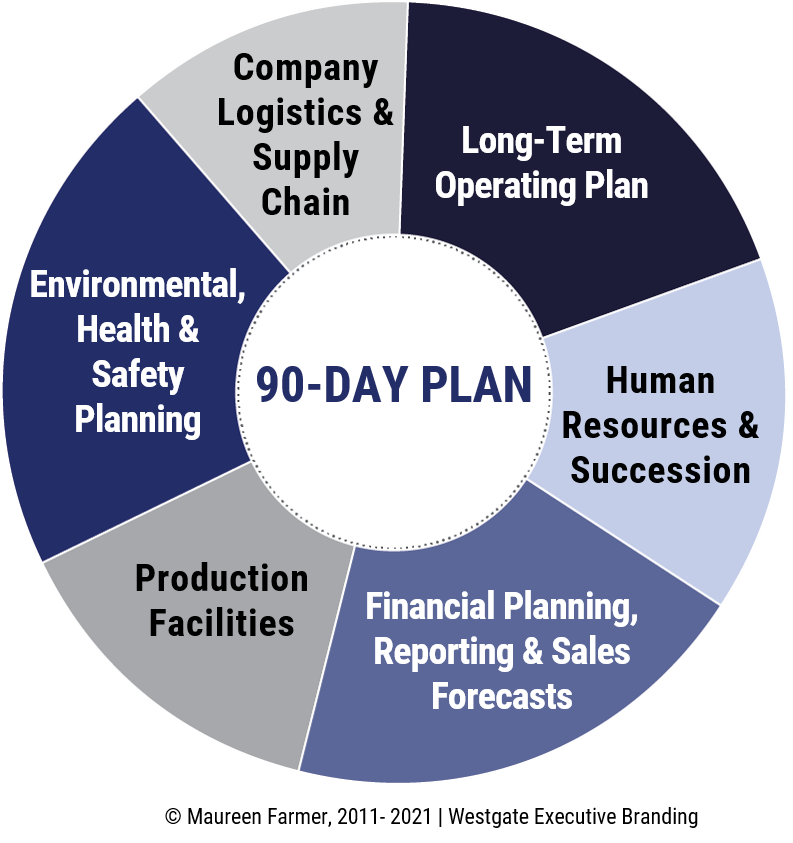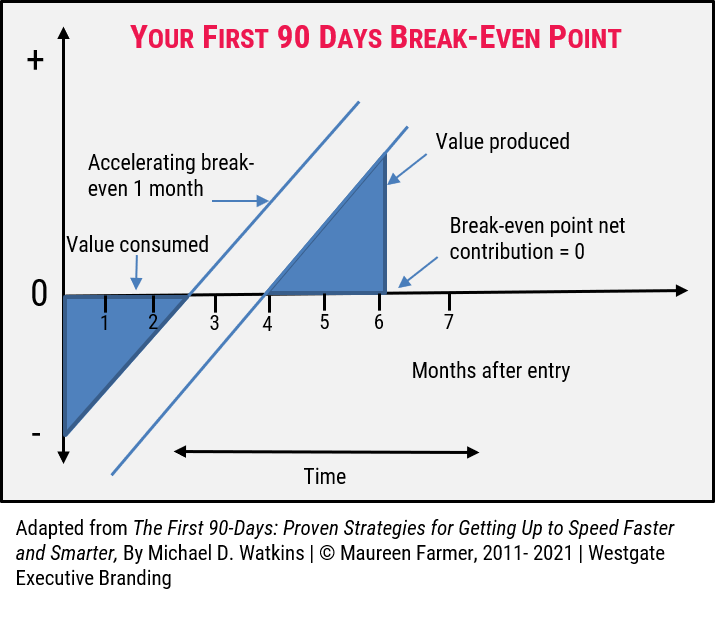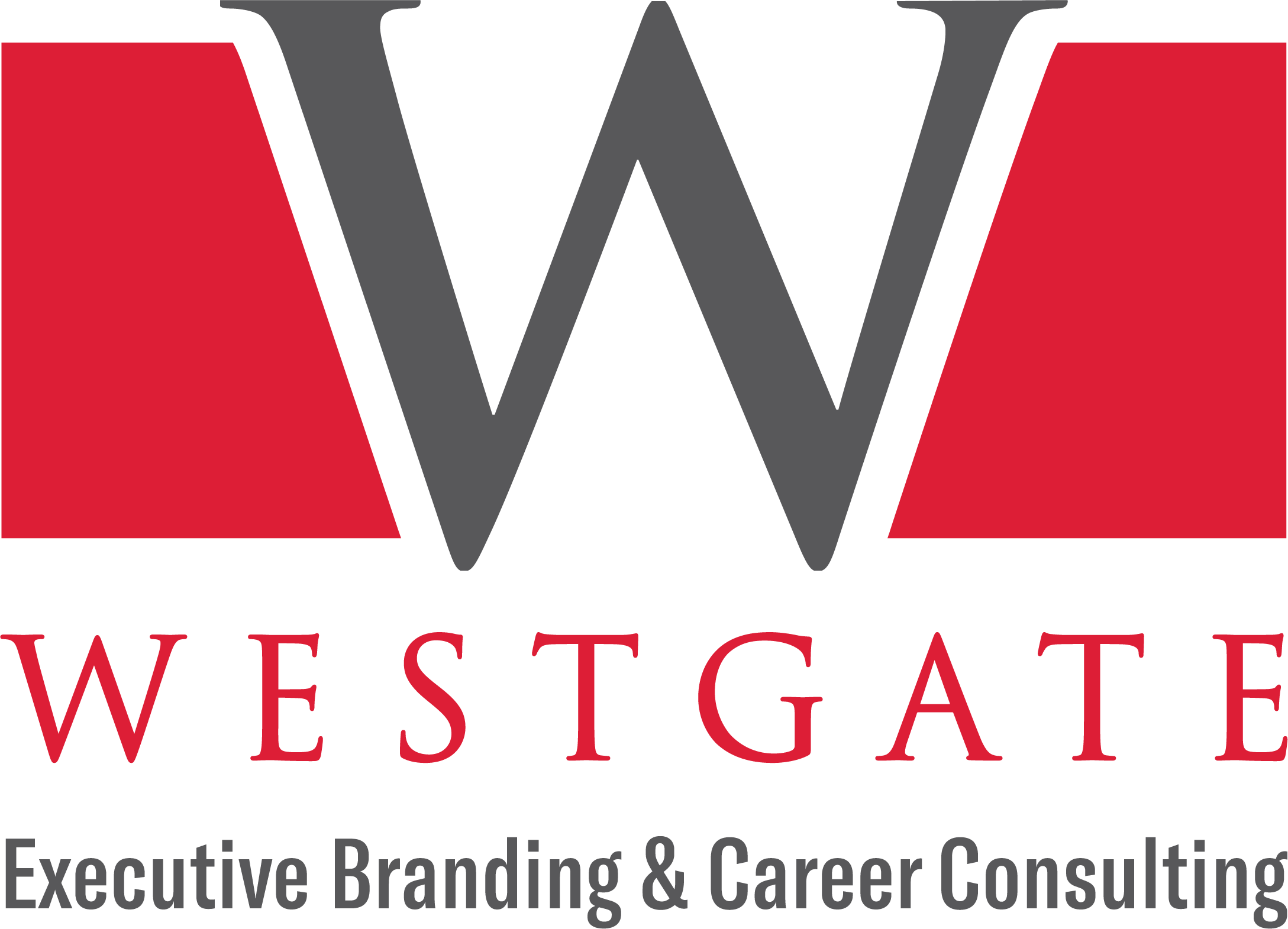Whether you’re a new CEO, an experienced CEO, or a C-level planning to get hired up, you can use this comprehensive 90-day plan to jump-start your year, maximize performance, and appease your investors.
At the time of this writing (second wave of COVID-19) there is intense scrutiny paid to CEO performance, especially for industries suffering the loss of business. Leadership is watching, the board is anxious, and Wall Street is tapping its toes waiting for your numbers.
That’s why the 90-day plan is an excellent tool for both your career toolbox and your leadership tool chest.

The 90-day plan works for your job interview and for regular daily business
Like a Swiss Army Knife, the 90-day plan will help you master the job interview, master your first 90 days on the job, and serve as a continuous performance improvement tool.
- For the executive job interview: Use the plan as a presentation to the hiring committee at your next job interview. Often candidates are asked to deliver a presentation on a topic of their choice. Most candidates struggle with a proposed topic. What better topic to speak about than your coveted company itself. Although you will need to make a few assumptions to complete the plan, the 90-day plan becomes your job interview pitch deck (refer to the PDF download template at the end of this post).
- For your first 90 days on the job as the CEO: The 90-day plan can be used to help you onboard and ramp up faster and it also serves as your training plan. The board will certainly be impressed when you present them with your own productivity plan. This prowess demonstrates your planning skills as well as your business acumen.
- For your continuous improvement plan at any level: Create the plan and use it in perpetuity. The plan is sure to keep you and your team on track and accountable.
A 90-day plan helps to document, organize and create an action plan for the next quarter. It’s a valuable tool to keep you and your team on track. It will also eliminate the last-minute scramble to pull your quarterly reporting numbers together.
Most new CEOs do not use a 90-day plan. Both your board and your team will appreciate your thoughtfulness and planning prowess, while you simultaneously raise your visibility and strengthen your personal brand as an astute business leader.
90-Day plan for a manufacturing operation
The following 90-day plan is based on a manufacturing operation. You can easily apply the principles to any business. It includes operational planning for finance, human resources, operations, and environmental health and safety (EH&S).
Whether you’re currently interviewing for a C-level role or have just accepted a new role as a CEO, this 90-day plan will help you transition into your role much faster and with greater harmony.
This article examines the onboarding process for new CEOs and provides a 90-day plan sample for your use. The 90-day plan is dual purposed (1) for job interview preparation and (2) as your ready-made onboarding and training plan for your new opportunity.

Up to 50% of new CEOs fail within 18 months
In the Harvard Business Review article, After the Handshake by Dan Ciampa, one-third to one-half of new CEOs, whether they're hired from outside or internally, fail within their first 18 months.
"Newcomers (new CEOs) misread the political situation or overestimate the organization’s willingness to abandon old behaviors. Meanwhile, boards and key executives fail to grasp the complex nature of CEO succession or set one-dimensional expectations of the new leader.
A comprehensive succession process begins when a candidate accepts the position and lasts for several months after his or her arrival. The outgoing CEO, the chief human resources officer, and the board should all have roles in helping the newcomer navigate company culture and politics."
But that’s for the benefit of the organization. The onboarding process is often geared toward the benefit of the company. By creating this asset for yourself before you begin your new role, you will increase the chances of achieving your goals with clarity and confidence.
The 90-day planning process helps to set the stage for a successful transition. In his popular book “The First 90 Days on the Job—Proven Strategies for Getting up to Speed Faster and Smarter” by Michael Watkins, he recommends preparing for the new role before stepping onto the company’s grounds. He suggests defining a learning agenda, which is a systematic learning process—a virtuous cycle of information gathering, analyzing, hypothesizing, and testing (p.50).
Here is a partial list of questions Michael proposes (see his book for the comprehensive list):
- How has the organization performed in the past?
- How were goals set? Were they met?
- What measures were used?
- What behaviors did the measures drive?
- What happened when goals were not met?
- What is the stated vision and strategy?
- Who is capable, and who is not?
- Who has influence and why?
- What are the landmines?
- Are their islands of excellence?
- What elements of the culture should remain?
The break-even point for new leaders
This is the point at which you have contributed as much value to your new organization as you have consumed from it (The First 90 Days, p. 3). The faster you are productive, the more everyone benefits and the more influence and control you’ll have. The 90-day plan will help you achieve the break-even point faster.

CASE STUDY: GEORGE
George moved from another state to assume a senior executive role in an energy company in the west. Highly qualified and deeply experienced, he was sought after by a national executive search firm. George and his family, including his spouse and three children ages 12, 13 and 17 made the move several states west.
Less than 16 months later, they returned east. The children were struggling in school and his wife could not find suitable employment in the new city.
In an extensive exit interview, the executive disclosed his frustration and disappointment in the outcome of this major move. Not only did the company lose out on his expertise, but the organization’s succession planning also was thwarted and the personal toll on the executive and his family was extensive. He indicated that if their family had been helped in settling (finding schools, employment, and sports teams), they likely would have decided to stay.
When you’re making a major transition to a new location, asking for assistance for your family is a wise move. Without a plan, not only will you, the CEO, struggle to settle, your family may as well. The example of George could have been easily mitigated with minimal effort. This can save you from heartache and save your new company significant avoided costs in the long term.
Why build a 30/60/90-day plan?
- Most enterprise leaders have spent years working toward a C-level management position.
- They have been recognized for their knowledge, hard work and conscientious nature. While this may sound like a formula for management success, it’s not always the case.
- Metrics matter significantly.

Create agility, clarity and increased competitiveness
- In a fast-moving environment, the 90 days plan can be critical to the success of the overall organization and will set the tone for the next 6, 9, and 12 months.
- In this competitive environment, we need to show progress quickly, by getting to know our business, team members and product while achieving fast, highly visible successes, forming a plan and accomplishing the necessary tasks.
- There are significant costs of not planning.
Most of your competition (other CEO candidates or CEOs in business) who do not have a 90-day plan essentially enter the market blindly with no more than a basic vague business plan to guide them.
This is a recipe for disaster, it is critical to define and document your goals, target and objectives, set timelines and create a road map for the next 90 days. This will give you a jump on the competition who didn’t take the time to formulate an action plan. It can be simple to do. The most important activity is to write it down—do not worry about making it perfect, because like any plan, it will change.
How to create a 90-day plan
- Developing the 90-day plan is the first step in gaining business credibility with your (new) operational team and upper management.
- Each of your direct reports must decide what they want to accomplish 30, 60, 90 days from today and set reasonable and attainable targets. The plan must outline how to achieve visible results in key areas, allowing you to gain credibility when the desired targets have been reached.
- This plan must be shared with all teams because this is an opportunity to receive feedback and give the rest of the team a chance to shape the plan and start the buy-in process.
- To be effective the 90-day plan must have clear objectives and be aligned with those of the company and be a living document that is continually referred to and assessed. Make it simple.
Plan objectives
- An effective 90-day plan includes objectives for each department manager and the department team and must be reviewed by upper management to ensure alignment with current departmental and company priorities, targets and core values. Several targets need to include results from individual managers and their related teams.
- A well-prepared 90-day plan includes (but is not limited to) the following topics, each of which is aligned with those of the company. Review the goals outlined in our business plan. The 90-day business plan can be likened to the first leg of a road trip. The trip may be 2,000 miles, but the first leg is only 200 miles. Understanding the long-term goals helps to prioritize immediate needs.
- Write a list of action steps to help propel the company to the next leg of the journey which will support long-term goals.
- Action steps include personnel changes, training, product additions, obtaining financing for expanding operations. Include the possible return on investment for each actionable item. Estimate it if necessary.
- Prioritize the actionable items into a list with the items that will create the quickest return at the top of the list. Quick returns gain attention while you focus on longer-term goals that can result in bigger returns over time.
- Create a desired date to accomplish the actionable item goals. This is critical.
- The top priority item should be completed within the 90-day plan with other actionable goals started during the 90-day phase.
- Integrate the 90-day business plan into the long-term goals and plans of the company. Remember the short-term goals are part of a bigger picture.
- Not incorporating the 90-day plan into the 1 – 2-year plan is like driving the first 200 miles without plotting the next 200 on the map to complete the 2,000-mile trip.

Key to success
Performance targets
- Top three quarterly/monthly/annual performance targets.
- Explain why these are important.
- Identify the actions necessary to meet these objectives.
- Estimate the allotted time frame for each target.
- Assign a kingpin for each target even if it is solely for reporting purposes.
- Action is required to reach these targets.
- Identify potential weaknesses in each department. Use your diplomacy skills here. If you are currently in the 90-day window of a new job, all eyes are on you. Make changes very carefully. Celebrate wins often.
- Determine the general direction each manager would like to see his/her department go in the next 6-12 months. Create a safe space to do this activity.
Behavioral growth objectives
- Communication.
- Leadership.
- Motivation.
- Teamwork and collaboration.
- Goals must be S.M.A.R.T- specific, measurable, achievable, realistic/relevant and time-based.
- Gather as much information as possible from upper management regarding expectations, company priorities and performance evaluation metrics. Seek out the company historians and ask their opinion.
- The 90-day plan will become a personal mission statement that must be constantly reviewed and updated as new situations arise.
- There is no value in creating a plan that is never looked at after it’s completed.
T minus 14 days and counting
- Review current company performance and key department metrics.
- Review your job description and job description for each member of your team. Role ambiguity is a major time-waster.
- Identify what is expected from the board.
- Write down 3 – 7 specific objectives for the next 30 days
- Key short-term objectives. These objectives should be written in format; I will(action) by (date) which will (specific benefit that will result from doing this).
- Establish a reasonable timeline involving all tasks and objectives to be completed.
- Get a multi-dimensional view of your department. Look at the department from as many different perspectives as possible, such as the executive team, business development, customers, competition, suppliers, investors, shareholders, regulators and front-line employees.
- Establish a fact base by engaging the organization in a due diligence process on itself, looking at the business from an internal as well as external perspective. This includes listening to internal and external customers.
- Identify quick-start initiatives that can be executed immediately and will show a bias for speed and action gaining momentum.
The first 30 days
The first 30 days are critical as they set the tone for the quarter. During the first 30 days the leader must develop a tactical plan that includes the following:
- Evaluate your Team - determine each of their strengths and weaknesses in a contextual manner. In some situations, strengths become weaknesses and in others’ weaknesses become strengths.
- Evaluate existing resources and study what is known about them, how they have been performing, and what value they bring to the table.
- Identify high visibility issues that must be addressed immediately.
- Determine critical decisions that cannot be postponed.
- Quick wins that can be accomplished and gain upper management support.
- List all major decisions and capital investments that can be deferred until the overall strategy has been developed.
- Ask: What are the biggest opportunities and challenges? What are the biggest strengths and weaknesses, challenges and opportunities facing Company as a whole?
- Set some goals (big hairy audacious goals) that represent making a difference. For example: “We are going to increase our production by 40% in 60 days”.
- Figure out what you need to do to deliver on your plan. You may have been hired because you are brilliant, but what are the basic nuts and bolts deliverables the board expects from you?
- Target quick low-hanging fruit wins. You probably already have an idea of some areas where you want to have an impact. My advice is to bypass elaborate planning and preparations and go for some quick wins. What goals could you accomplish in weeks, not months, that could be a spearhead for a larger breakthrough?
- Always consider your people. You must honor your relationship with them. Be thoughtful and careful how you make changes early on. Most people crave acknowledgment and recognition. This is easy to give and has a significant ROI.
- Send a message that you are aware of the key issues and have plans to address them which gives an opportunity to establish rapport with your people.
- Conclude with a working session with your team in the first 30 days by developing a refined direction of vision and goals that are now shared by your direct team as they helped create it.
- Celebrate with your team.
Day 60
- The first task in the 30-to-60-day plan is to review the 30-day plan and ensure the meeting of targets; and if not, complete such targets ASAP.
- The core activity during the second 30 days is to prioritize targets. Make a detailed plan of action and start implementing it. The overriding approach in the second phase is to fine-tune conceptual models and make detailed action plans that fit in with the company strategy.
- Identify current or potential issues and devise action plans to solve such issues.
- Take ownership of projects.
- Develop a new set of priority strategic initiatives with your direct team, including refined goals for the organization (working session).
- Identify any specific behavior changes needed to successfully drive the new direction and initiatives forward.
- Engage the next-level teams in a dialogue about how to operationalize the strategic initiatives and live the required behaviors.
Day 90
- Check-in with each direct report for a first 60-day review and execution of the plans fully in the final 30 days, or the 60-to-90-day period.
- Resolve bottlenecks and contingencies using creativity.
- Participate in review meetings to evaluate the viability of initial expectations and revise goals and targets as appropriate.
- Create and implement a measurable results action plan considering all variables that manifest during implementation.
- Agree with your team on how to move forward and secure sufficient resources to get things done.
- Obtain constructive feedback from team members on your progress.
- Start to recommend new partners.
- Take a leadership role.
- Start being a resource to others.
- Keep a focus on problems/projects/activities that are priorities.
- Create some momentum in a positive and collaborative way.
- Celebrate successes (even small ones) and recognize your people.

Long-term operating plan
- Production process analysis & continuous improvement.
- Cost containment and profit growth.
- Quality compliance to systems to reduce dumping and none conforming TQM implementations, risk management and quality control.
- Waste reduction.
- Value stream mapping.
- Develop a current state map to understand what is happening. Flexible processes, short lead time, connected processes of continuous flow and pull of material.
- Production focused on waste management.
- KPIs.
Company logistics
- Site Plan.
- Fleet analysis.
- Develop a centralized Logistic and sourcing department.
- Logistic department enterprise management system.
- Tracking and monitoring systems.
- Negotiation and auditing contracts.
- Plan and procure materials to maintain optimization of rail inventory stock levels and products to meet the company’s customer requirements.
- Develop methods and procedures for scheduling traffic to support customer demand and minimize cost
- Develop and lead Sales and Operations Planning (S&OP) process.
Finance
- Reduce financial turnaround.
- Improve treasury operations.
- Implement ERP, cost analysis model.
- Performance metrics / benchmarking training and employee development. Consider team-building and retention initiatives.
- Workshop to train and teach on waste reduction value stream mapping.
- Oversee long-term budgetary planning and cost management in alignment with Company’s strategic plan.
- Align financial management with 90 days of financial planning and projections.
- Develop and manage direct staff.
- Celebrate wins. Recognize your people.
HR
- Plan, develop, organize, implement, direct and evaluate the organization's human resource function and performance.
- Translate the strategic and tactical business plans into HR strategic and operational plans.
- Evaluate and advise on the impact of long-range planning of new programs, strategies and regulations.
- Create staffing strategies and implementation plans and programs to identify talent.
- Collaborate with the HR leaders to commence succession planning.
- Develop human resource planning models to identify competency, knowledge and talent gaps.
- Celebrate wins. Recognize your people.
EH&S
- Spearhead the environment health safety and sustainability work environment in achieving zero tolerance.
- Lead, develop, implement, and maintain all environmental, safety and sustainability programs, policies, and procedures.
- Drive and promote company’s positive safety culture focusing on influencing behaviors.
- Coach and train all employees on the interpretation and administration of MSHA policies and procedures.
- Document, communicate, and manage all near misses, environmental/accident investigations.
- Prepare training programs related to MSHA.
- Conduct (or coordinate) on-site reviews and audits of operations.
- Celebrate wins. Recognize your people.
Production facilities
- Identify 1–3-year resource plan.
- Identify 3–5-year resource plan.
- Audit the 25-year reserve plan based on the company’s strategy.
- Identify waste in the manufacturing processes and focus on delays in WIP processing or incorrect processing of excess inventory minimizing unnecessary movement.
- Create flow step mapping setting up a stable process for predictable plant in feed based on end user demand.
- Utilize equipment planning and utilization metrics mapping.
- Implement manufacturing plant resource (fixed, moving, human) mapping.
- Prepare and implement a robust and effective compliance system, designed to ensure laws and regulations are adhered to and ensure non-compliant activity is detected, documented, communicated, and corrected.
- Celebrate wins. Recognize your people.
Your 90-day plan checklist
- Write it down. I have never seen anybody do this successfully without writing it down. You'll forget things, or you'll add things that weren't originally intended.
- Schedule action items. Use a week-by-week breakdown, it's paramount, because if it's month by month, you'll get sucked in by the fires, and you'll come to the end of the month and realize you can't get [your plan] done.
- Consult with your colleagues, team members, supervisors and any other stakeholders to help you develop the most complete assessment.
- Determine and manage expectations carefully.
- You need to know how your boss defines success for your position. But to find out, you need to both ask and observe.
- Celebrate successes, even when they are small. Your team will appreciate a kind word of thanks and appreciation.

Use this script to confirm accountability with your team
All eyes are upon you in the first 90 days of a new role. You must ensure you’re holding yourself and others to account. Customize this simple script for your own situation (for more scripts like this, see my CEO Script Vault: Job Search Scripts for Busy Executives).
“Dear Dean [your new boss/board chair]:
I am writing to make sure I’m on the right track. Yesterday we agreed that in the case of a crisis, I am the key contact for the media, and you are my backup. When I receive a call from the media, I am to contact Bianca Marlo at Universal Public Relations Inc., and then call you. If you are not available, I then call Patrick Belgrade. I am to wait no longer than 90 minutes to hear from Bianca. If I do not hear from Bianca within 90 minutes, I will contact her manager, Darrell Dorie. ** “If I’m not on the right track, Dean, please let me know.”**
You must follow up on this communication with Dean and get his agreement on this new procedure. This message provides a historical record of the conversation if things go wrong.
Most importantly, this script can prevent problems, protect the business and protect essential relationships.
“Take 100 percent responsibility for making the relationship work. Don’t expect your boss [or board] to reach out or to offer you the time and support you need. It’s best to begin by assuming that it’s on your shoulders to make the relationship work. If your boss meets you partway, it will be a welcome surprise.” (Michael D. Watkins, The First 90 Days: Proven Strategies for Getting Up to Speed Faster and Smarter, P. 92.)
In our Career Navigator program, we assist you with every step of your job search, personal branding, job interviewing and onboarding to ensure your success in the new role.
And we do 100% of the writing in our programs enabling you to work in your career while we work on it!

